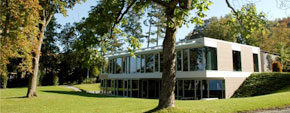| May 17 - 19, 2022 Realistic ELSI of Artificial Wombs |
Organizers:
- Kingma Elselijn, Southampton, Dr
- Verweij Joanne
- Romanis Chloe
LiFE-S (Liquid Fetal Extracorporeal Support) – more popularly known as “artificial womb” technology – has made ectogestation a realistic possibility. This means that we soon may be able to keep alive, outside the maternal body, third (and perhaps late-second) trimester premature infants in a way that preserves fetal physiology and is expected to radically improve their life chances. The technology has thus far successfully been tested on lambs (Partridge et al 2017; Usuda et al 2019); is soon to be tested on piglets; and it is expected to be tested on humans within the next five to ten years (TU/e news, 2019).
This technology is expected to revolutionise the prognosis and management of extreme premature neonates and we anticipate will have profound ethical, legal and social consequences. Yet these implications and attendant questions have received little attention (Romanis and Horn forthcoming). Instead, bioethical discussion and legal speculation has focused almost exclusively on questions concerning an imagined future of full ectogestation – in which babies are produced in bottles without the involvement of any pregnant person / mother at all. As a result, more immediate questions attending the imminent development of LiFE-S have been overlooked.
The aim of our workshop is to focus on the important and immediate yet overlooked questions surrounding the development of LiFE-S technology for humans in the imminent future. We wish to eschew sci-fi ‘artificial womb’ imaginaries and begin to answer the realistic short and medium term ethical, legal and social challenges attending this technology. The lack of attention to these questions and specifically to the ethical conditions of (looming) clinical trials of this technology and the extent to which the law might or should be able to protect vulnerable parties in this process is concerning. This gap in the literature must be addressed in advance of the technology’s first use in humans.
References
Partridge, Emily A., Davey, Marcus, G., Hornick, Matthew A. et al. 2017. “An Extrauterine System to Physiologically Support the Extreme Premature Lamb.” Nat Comms. 8:1-15.
Romanis, Elizabeth C., and Horn, Claire. Forthcoming. “Artificial Wombs and the Ectogenesis Conversation: A Misplaced Focus? Technology, Abortion and Reproductive Freedom.” IJFAB.
TU/e News, “Multimillion grant brings artificial womb one step closer”. Oct 8 2019. https://www.tue.nl/en/news/news-overview/08-10-2019-multimillion-grant-brings-artificial-womb-one-step-closer/
Usuda, Haruo, Watanabe, Shimpei, Saito, Masatoshi et al. 2019. “Successful use of an artificial placenta to support ovine fetuses at the border of viability.” Am J Obstet Gynecol. 221 (1);69e.1-69e.17






 Back
Back